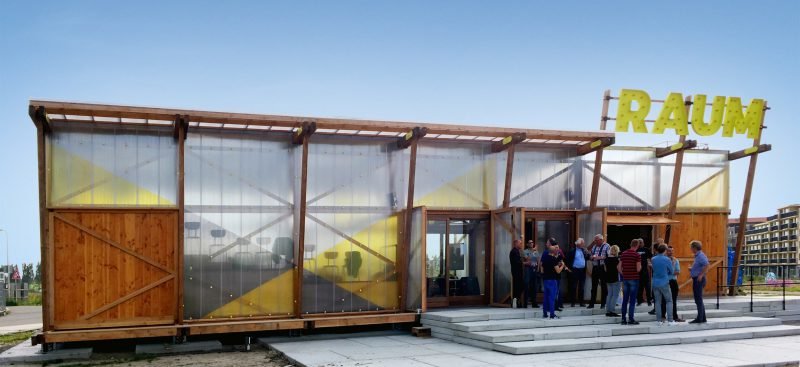Designer Homes For Bats
Often the discourse of providing sustainable urban developments is solely on reducing CO2 emissions with the focus of a shift towards renewable energy supplies. This is important enough, but unfortunately, the severe impact of built environment on the world’s biosphere and eco systems is often marginalized. However, it seems like the topic is gaining some recognition and becoming more present within the architectural debate.
We have previously blogged about urban beehives being installed in order to improve the coexistence of man and bee. Today my attention fell on architect designed bat homes as I was reading through Ben Campkin’s article ‘Bugs, Bats and Animal Estates’ in Architectural Design 03:2010 where he mentions the Bat House Project.

The winning design by AA students Jorgen Tandberg and Yo Murata for the Bat House Project
The Bat House Project is an attempt to raise awareness on biodiversity in London through encouraging public engagement in ecology issues and to improve the living condition of London’s 10 bat species. A competition was launched to design a home for bats in WWT London Wetlands Centre in Barnes.
Another recent bat house that comes to mind is the plywood built Bat Tower in Griffis Sculpture Park south of Buffalo, NY. The Bat Tower is a project by Joyce Hwang, with the help of her architecture students at the University at Buffalo. The construction consists of four hundred pieces of plywood creating narrow spaces, which apparently are ideal as bedrooms for bats.

Bat Tower in Griffis Sculpture Park
Previously I have been engaged in the discussion on the role and consequences of architecture’s impact on ecology and the coexistence of mankind, flora and fauna through a project with NoMadSpaceLab on the creation of a Synergy Reef in order to protect the fragile eco system of coral reefs and coastal mangroves.

Seabed view of Synergy Reef by NoMadSpaceLab
I find it interesting if designer housing for our far out relatives is picking up and the possibilities it generates for creative solutions. As Ben Campkin states:
“At the present moment – in which radical reconceptions of relationships between architecture and nature are called for – attention to animals, their habitats and their occupation of man-made environments, has the power to reveal architecture’s place within wider social and geographical processes… Considerations of the exchange between animals and architecture take us beyond the isolated architectural object, and of context as site, helping us to understand the architectural production of nature and to rethink architecture’s and architects’ zones of influence, connecting buildings to their environs in dynamic ways.”



